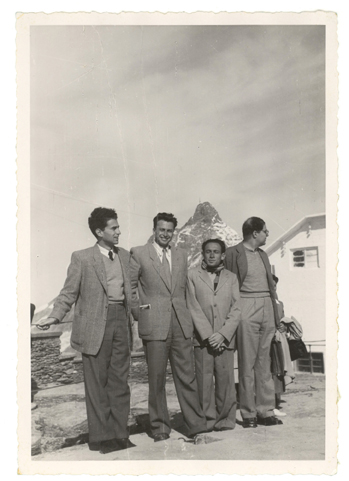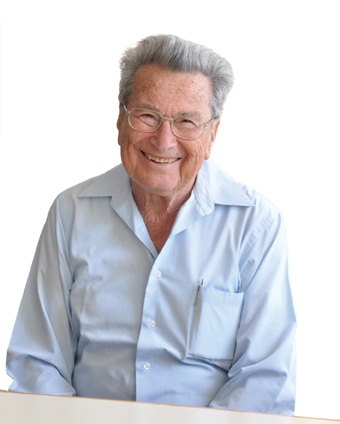60 years have passed since the shell model that describes the "laws of motion" in the atomic nucleus. The model is used to this day, however, there are still open questions

101 years ago Ernest Rutherford bombarded gold sheets with alpha radiation originating from radium. In the experiment it was discovered that the electric charge in the atom and most of its mass are in a very small area, tens of thousands of times the dimensions of the atom. This is how the atomic nucleus was discovered. The results of the experiment led him to propose the "planetary model" of the structure of the atom, as a nucleus around which electrons move in their tracks, similar to the structure of the solar system, where planets move in their tracks around the sun.
A model, in this context, is a theory regarding a particular system in nature. The model is described and formulated using a system of equations which constitutes a certain simplification, since it is not possible to accurately describe the full complexity of the system. The equations must be solvable, and the solutions must match (approximately) the results of experiments or observations. Niels Bohr understood the difficulties in maintaining the "planetary model", and managed to overcome them by applying and extending Max Planck's quantum theory to the movement of electrons in atoms. Bohr's theory made it possible to correctly calculate and predict the energy rates and other properties of atoms. Wolfgang Pauli's exclusion principle provided an explanation for the fact that in each "shell" in which the electrons move, only a certain number of electrons can be found. Therefore, the electrons move in a system of "shells" around the nucleus, similar to the onion skins. This fact is the basis of the periodic system of the elements.

Another eight years passed, and Rutherford offered a "guess": in the atomic nucleus, in addition to protons, there are also massive particles with no electric charge. He proposed to call them "neutrons". Twelve years later, in 12, the daughter of Pierre and Marie Curie, Irene Curie, and her husband, Frédéric Julio, discovered that a beam of unknown particles, striking the nuclei of various atoms, could extract protons from them. They believed that the beam they used was a beam of gamma radiation, but James Chadwick showed that "apparently, it is a beam of neutrons, which Rutherford talked about". In the same year, Werner Heisenberg described the nuclei of atoms as consisting of protons and neutrons. This is how nuclear physics was born.
bond energy
Even then there were instruments for measuring the masses of nuclei. From these masses it was possible to calculate, according to Einstein's formula E=Mc2, the energies that bind the protons and neutrons in the nucleus. Already in the same year, based on these measurements, John Bartlett proposed the shell model of the protons and neutrons in the nucleus, similar to the electron shells in the atom. According to this model they move in tracks around the center of the nucleus. Despite the great difference between the nucleus and the atom, where there is a center that exerts electric forces on the electrons, Bartlett was able to show agreement with the facts regarding nuclei with up to eight protons and neutrons.
In the 30s, Walter Alsasser discovered "magic numbers": the numbers of protons or neutrons in particularly stable nuclei (2, 8, 20, 28, 50, 82 and 126). He tried to explain the phenomenon of "magic numbers" by describing the structure of a nucleus consisting of "shells" that contain protons and neutrons. Many physicists, including the Israeli Yoel Rakah (1965-1909) from the Hebrew University in Jerusalem, tried to calculate the energy of neutrons and protons in the nucleus, using the shell model. The calculations were successful to a certain extent only with regard to nuclei with the small "magic numbers" (2, 8, 20).
In 1936, the model received a "death blow" at the hands of Niels Bohr, who relied on nuclear processes in which a particle that hits the nucleus is swallowed up by it - and then the nucleus emits alpha or gamma radiation. These phenomena contradicted, according to many, the possibility of the existence of "shells" in the nucleus. Instead, various statistical theories began to emerge. Yoel Rakah (who recently celebrated his 100th birthday), did not abandon the calculation methods he developed for use in the shell model. He believed that if these methods were not suitable for the nucleus, it would be possible to use them for energy calculations of atoms, and he did so with great success. Later it turned out that these methods were indeed also suitable for describing phenomena in nuclei.
In 1948, the physicist Maria Mayer entered this complex picture. She published an article in which she showed, on the basis of findings from many experiments carried out in different parts of the world, the reality of the "magic numbers". A year later, following a question from Enrico Fermi, Maria Mayer proposed the "quasi-atomic model", which is, in fact, the shell model. She claimed that between the spin of the protons and neutrons (internal angular momentum) and their tracks there are strong forces that do not work in whole atoms. Therefore, the order of the shells in the nuclei is different from the order in the atoms, and the "magic numbers" appear naturally. In other words, the model fits reality.
This is how the "shell model" returned to the center of the scientific arena. The same explanation for the order of the shells in the nucleus was independently proposed at the same time by Hans Jansen. Meyer Vincen received the Nobel Prize in Physics for these achievements. In 1949, several Israeli research students were sent for doctoral studies abroad. Among them were Amos de Shalit and Yigal Ptolemy, who completed their studies for a master's degree under the guidance of Yoel Rakah. After completing doctoral studies in Zurich, under the guidance of Paul Scherer and Wolfgang Pauli, Amos de Schlit continued post-doctoral research at the Massachusetts Institute of Technology MIT, while Yigal Ptolemy chose Princeton University.
In 1954, the two, with several other young physicists, returned to Israel, and discovered that the Israeli government, which had planned to establish a research institute in physics, had withdrawn from the plan. This is where the Weizmann Institute of Science came into the picture, which invited Amos de Shalit to establish a physics department within it, and the other members to join it.
The "shell model" was hot news at the time. Using it, it was possible to determine in which orbits protons and neutrons can (although do not have to) move. When it came to a nucleus whose shells are closed (fully occupied), it was possible, with the help of the model, to know its quantum state, but it was impossible to calculate its energy (for this it was necessary to know the strength of the residual force of the strong force, which binds these nuclear particles to these, and prevents their dispersal everywhere).
Quantum states
When it comes to a nucleus in which there is one particle (neutron or proton) outside of closed shells (that is, in a sort of beginning of a new shell), it was difficult to calculate the ionization energy, i.e. how much energy must be invested, to "pluck" this particle from the nucleus. If there are several protons and neutrons outside closed shells, the situation is more complicated: such a nucleus may exist in several quantum states, and it is impossible to know what its ground state (the "natural") state is. For this it was necessary to know the residual forces acting between the protons and neutrons that are outside the closed shells. If that wasn't enough, the situation got even more complicated: in scattering experiments of individual particles it became clear that, at short distances, the forces acting between the particles are very strong, and sometimes repulsive forces.
This phenomenon did not correspond to the independent movement of the protons and neutrons in their tracks. This fact further complicated the question of why the shell model is so successful.
To this day there is no satisfactory answer to this question. However, a very practical problem arose: it was finally established that it was impossible to use the shell model with the forces measured between individual particles. The residual forces are very different from these forces, and there was no exact way to get them in the calculations. Amos de Shalit, Yigal Ptolemy and their colleagues in the young physics department of the Weizmann Institute of Science entered this territory, researching the shell model, in addition to other studies in nuclear physics and particle physics whose only source of creation was cosmic radiation. In order to calculate the binding energy between the outer protons and neutrons (outside closed shells), and in the absence of information about the residual forces, a way was developed at the institute to determine them based on the energies of nuclei measured in experiments. It turned out that in many cases the information that was available on measured energies was sufficient to determine forces from which energies of many nuclei could be successfully calculated, both in their ground states and in excited states (calculation of energy levels - the spectrum of a nucleus). Using this method, developed at the institute, led to successful "predictions", some of which were surprising. From some typical cases it was possible to deduce general properties of the residual forces.
Ten million modes
The description of the method, along with the theory of the shell model, following on from the works of Yoel Rakah, was published in the book of Amos de Schlit and Yigal Ptolemy, Nuclear Shell Theory, in 1963. This book was widely distributed, and is considered a fundamental book among nuclear physicists in the world. The method of calculating the energies was accepted by the world scientific community, and it is used today for complicated calculations in which several tracks must be taken into account, until the number of possible states reaches ten million or more.
"In such complex situations," says Prof. Ptolemy, "the model provides reasonable results, and predicts to a good approximation the results obtained in the experiments. Even in these calculations, only the residual forces acting between two particles are taken into account. But with all the success of the simple shell model, I would like to understand why it is so successful. This is an open question that has lasted for decades."

One response
Just a try (this is not the user Ruby)